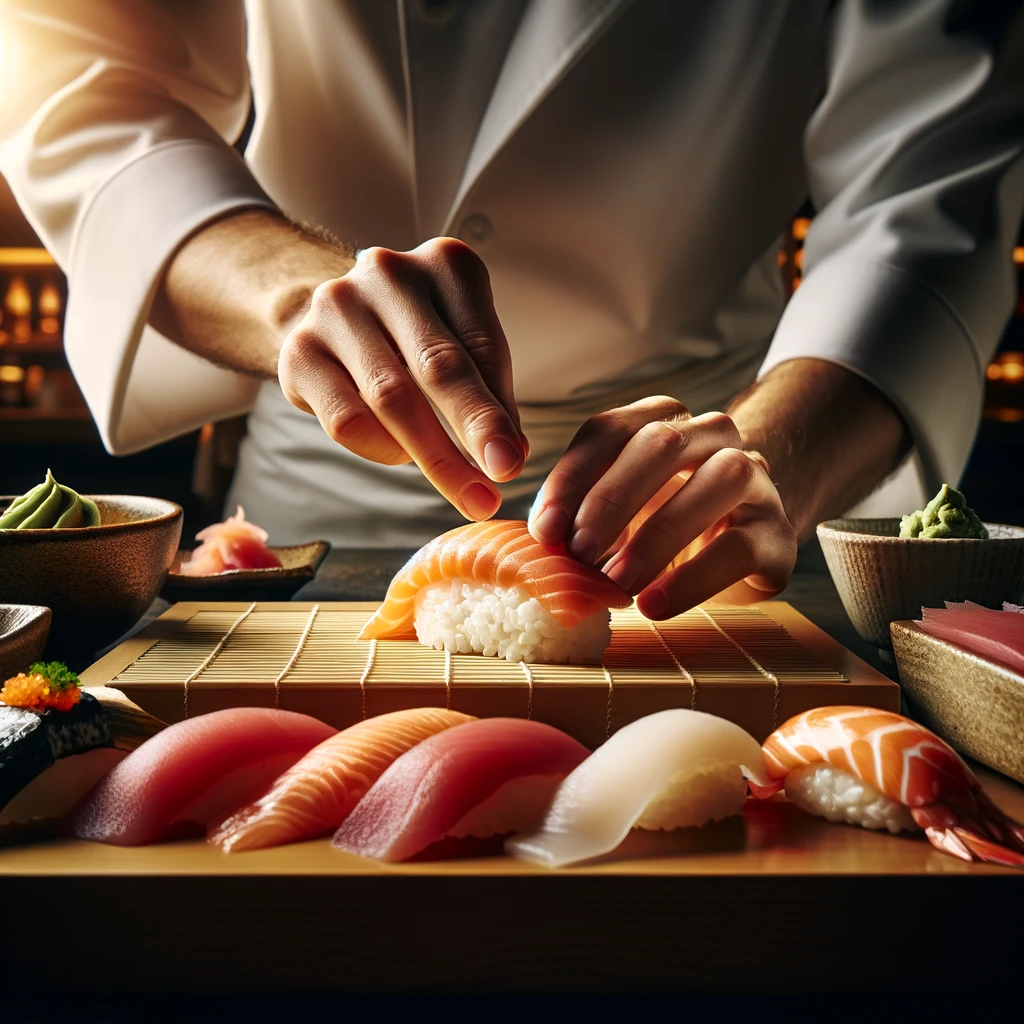Nigiri sushi represents a pinnacle of simple elegance in Japanese cuisine, embodying a culinary tradition that marries minimalistic beauty with the subtle complexity of flavors. In this comprehensive guide, we delve into the essence of nigiri, exploring its preparation techniques, varieties, and the nuances that distinguish it from other forms of sushi. Whether you’re a sushi aficionado or a curious foodie, understanding nigiri is a step towards appreciating the depth of Japanese gastronomy.
Understanding Nigiri Sushi
The Essence of Nigiri
Nigiri sushi (握り寿司) consists of a slice of raw fish or seafood placed atop an oblong mound of vinegared rice. The word “nigiri” comes from the Japanese verb “nigiru,” which means “to grasp” or “to press,” reflecting the method of forming the sushi by hand. This form of sushi highlights the quality and flavor of its ingredients, relying on the chef’s expertise to balance the texture and taste of the rice with the freshness of the fish.
How Nigiri Sushi Is Made

Making nigiri sushi is an art that sushi chefs, known as itamae, spend years mastering. The process involves several steps:
- Preparing the Rice: The rice used in nigiri, known as shari or sushi rice, is seasoned with a mixture of vinegar, sugar, and salt. It must be cooked to the perfect consistency — sticky enough to hold together but loose enough to separate upon eating.
- Forming the Rice: The chef takes a small amount of rice, about a tablespoon, and gently presses it between the palms to form an oblong shape. The key is to apply just enough pressure to make it hold together without compacting it too much.
- Slicing the Fish: The fish, typically at room temperature, is cut into thin slices. The slice’s thickness varies depending on the type of fish and the desired texture.
- Assembling the Nigiri: The slice of fish is draped over the rice. Sometimes, a dab of wasabi is placed between the rice and fish for an extra layer of flavor. The chef then lightly presses the fish onto the rice to ensure they bond without squashing the rice.
- Finishing Touches: Some nigiri pieces are brushed with a glaze of soy sauce or topped with a sprinkle of sea salt or other garnishes to enhance the flavor.
Types of Nigiri Sushi
There are numerous types of nigiri sushi, each featuring different toppings. Some of the most popular include:
- Salmon (Sake): Known for its rich, buttery flavor and vibrant color.
- Tuna (Maguro): Offers various types, from the lean akami to the fatty otoro.
- Yellowtail (Hamachi): Appreciated for its delicate, buttery taste.
- Shrimp (Ebi): Often cooked, it has a sweet, mild flavor.
- Eel (Unagi): Typically grilled and glazed with a sweet sauce.
- Scallop (Hotate): Offers a sweet, creamy texture.
- Octopus (Tako): Known for its chewy texture and mild taste.
Each type of nigiri provides a unique taste experience, reflecting the diversity of seafood in Japan and the chef’s craftsmanship.
Nigiri vs. Other Sushi Forms
Nigiri sushi is distinct from other sushi forms like maki (rolled sushi) and sashimi (sliced raw fish without rice). The primary difference lies in the presentation and the role of rice. While maki involves wrapping ingredients in seaweed rolls, and sashimi focuses solely on the fish, nigiri strikes a balance by pairing the fish with a modest portion of rice, showcasing the harmony between the two.
FAQ
What is nigiri vs sushi?
Nigiri is a type of sushi where a slice of raw fish is placed on top of vinegared rice. The term “sushi” broadly refers to any dish made with vinegared rice and can include various forms such as nigiri, maki (rolls), and others.
What is the meaning of nigiri?
Nigiri means “pressed” or “grasped” in Japanese, referring to the method of forming the sushi by hand-pressing the rice and topping it with a slice of fish.
Is Nigiri always raw?
Not always. While traditional nigiri sushi features raw fish, some variations include cooked or cured ingredients, such as boiled shrimp (ebi) or grilled eel (unagi).